Latest update: 7th October 2011
Photos taken in the garden during 2010 and 2011 of crows, herons, starlings, foxes, cats, fish, toads and tadpoles.

Each year the pair of crows that live in a tree in the next garden brings
their fledglings to the garden to feed, in 2010 three young
survived and be
seen with their parents eating a lamb bone. The family stays together for a few
months, splitting up during the winter.
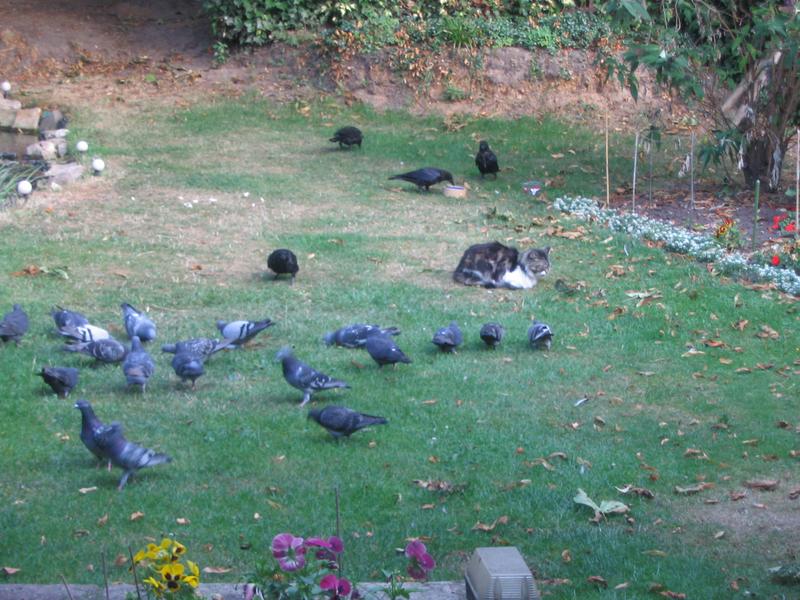
The crow family having breakfast, so hungry they ignore Susy the cat.
There is often a rush for the breakfast bowl, cats from
neighbouring houses
and the foxes. The crows get very noisy if beaten to the food.
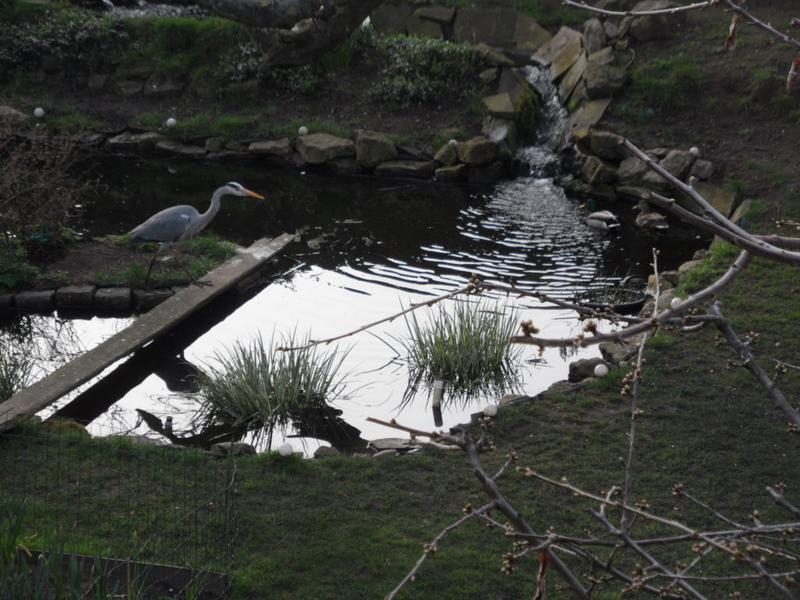
March 2011, the weather is already warm so the fish are near the surface of
the pond, within easy reach of the heron standing on
the plank bridge,
watched by two ducks near the stream.
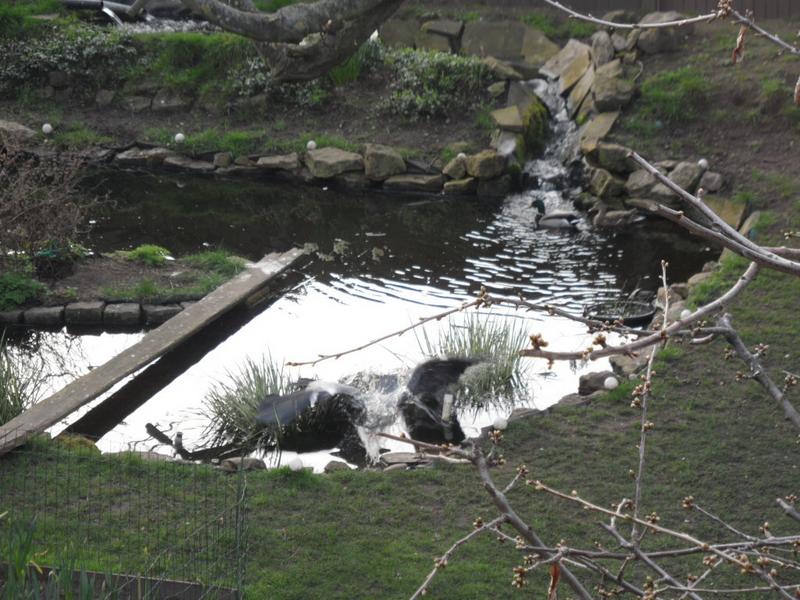
Very hard to see, but the heron has just flown from the island and is a blur
standing in the water by the plants in white fountain pipe,
head submerged
and grabbing a fish. A moment later the heron is on the lawn with the fish in
it's mouth. In many years, this is the
only time I've witnessed the
heron catch a fish from the pond, although it probably happens while I'm not
watching. The heron killed
all the fish in a neighbour's small pond the same
week, leaving the larger ones on the lawn. Exactly why I usually frighten
the heron
off rather than taking photos of it.
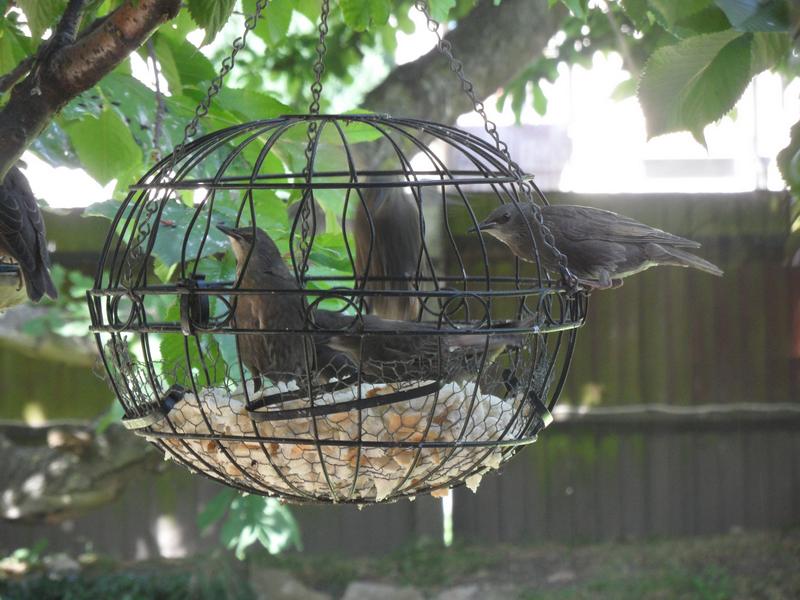
May 2011, an early spring and dozens of fledgling starlings on the bird
feeders. This is the bread feeder, made from two hanging
baskets and
some chicken wire to stop the bread falling to the pigeons waiting underneath,
although the starlings still drop it. The
same tree has peanut bar
feeder which is very popular but expensive to fill. £10 a week, bread is much
cheaper even when they are
eating two loaves a day during fledgling, before
natural food becomes available such as the cherries on the same tree.
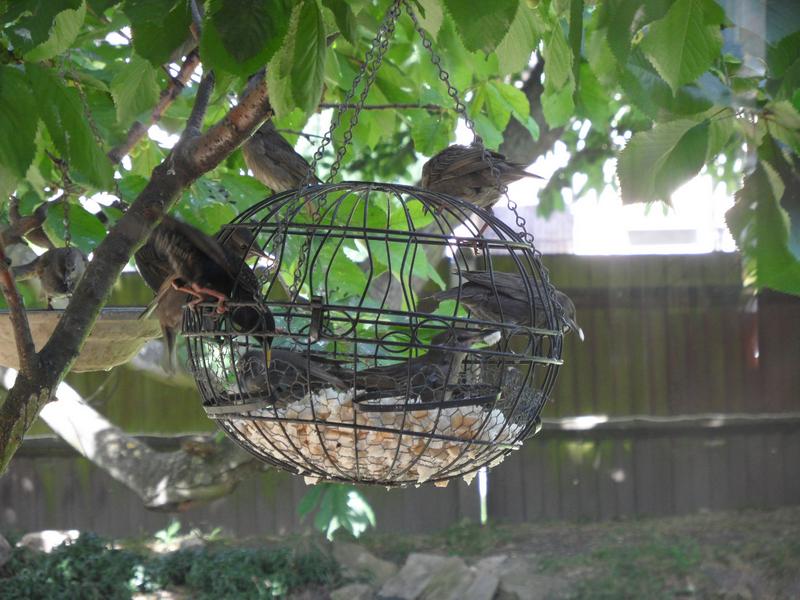
More fledgling starlings.
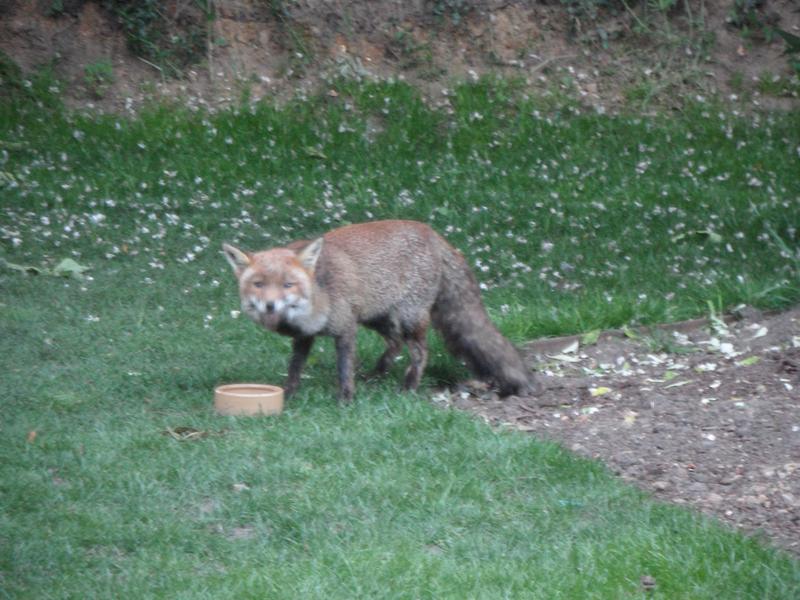
This fox visited the garden daily from late summer 2010 to early 2011.
She waited at the end of the garden at sunset each evening,
until I came out
with a bowl of dog biscuits or uneaten cat food, and would start eating when I
was 10 feet away from the bowl.
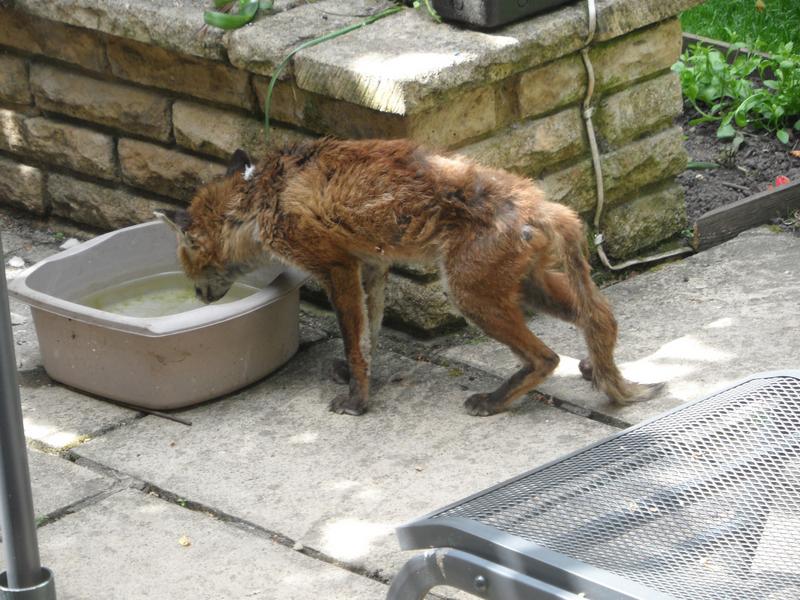
May 2011, a hungry and sorry looking young fox spent a few hours in my garden, then in my neighbours.

Same young fox, kept moving a few feet and then going to sleep again, oblivious to my taking photos of her.

Same young fox, ignoring Susy the cat. She then went to sleep next to the hose.

And again, moved down the garden 10 feet.

25th May 2011, not sure if this is the same young fox as the earlier
pictures, if so she is now extremely content, running madly around
the garden
every morning and evening. She often beats the crows to their food in the
morning, must be watching from under the hedge
or somewhere.
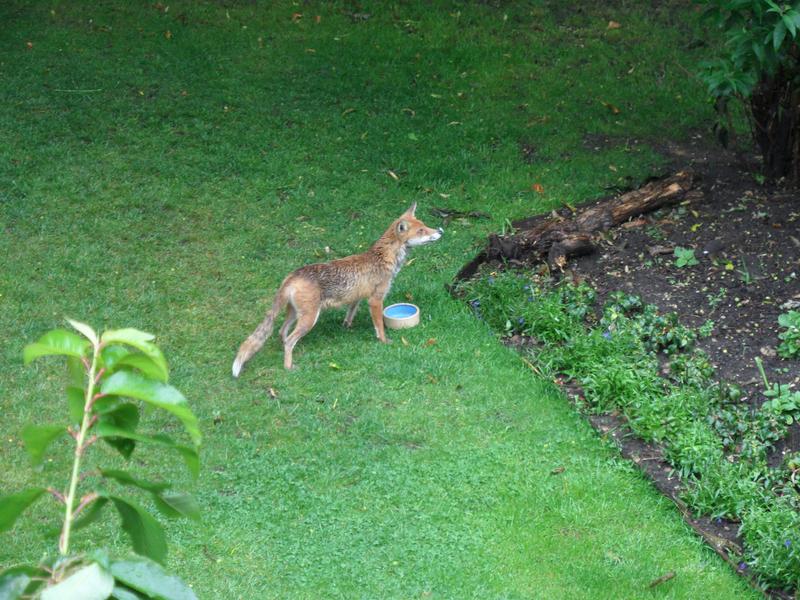
The young fox again.

Ditto.

The young fox still coming back for meals twice a day.
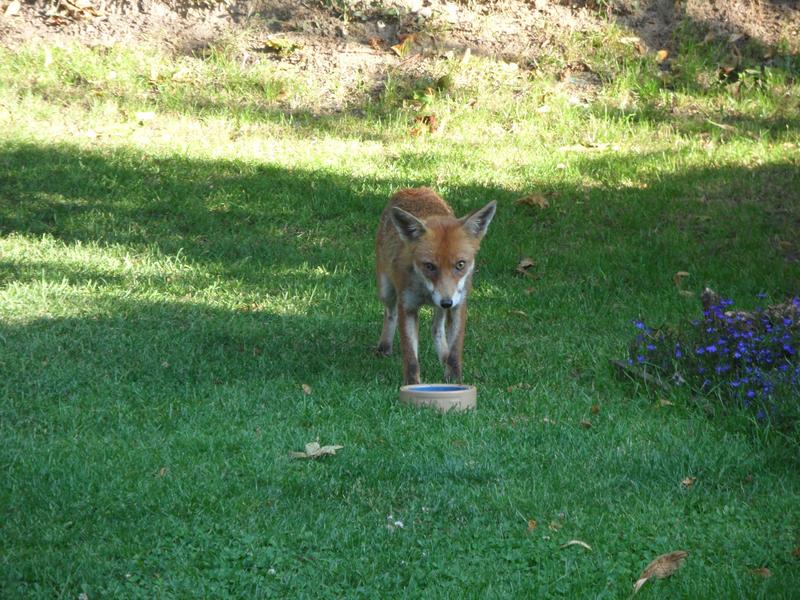
Ditto, early morning, sometimes it's a race between cats, crows and the fox who gets to the food first.

(September 2011, the fox is looking very healthy now, and comes for dinner
every evening. There are also two fox cubs that arrive some
evening and
fight over the food.

The fox watching me in the kitchen window one morning, expecting a meal.
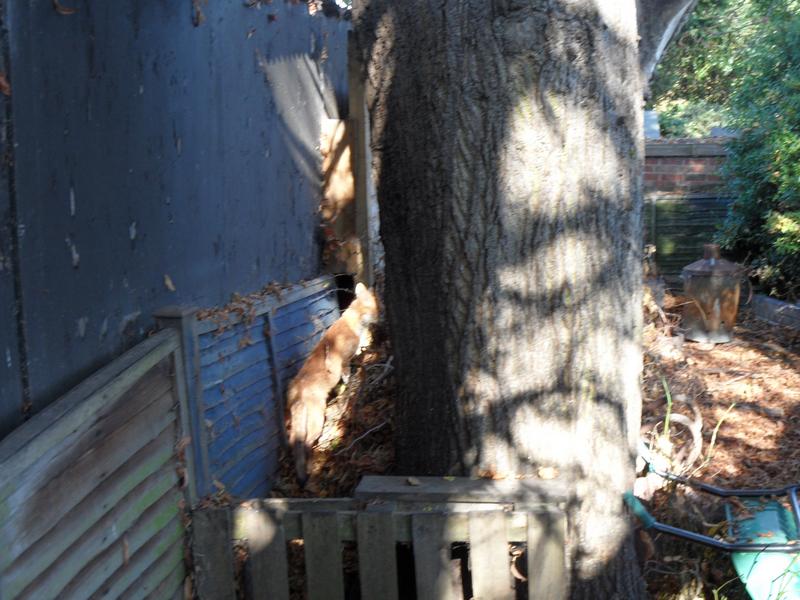
During the day, the fox often sleeps at the end of the next garden on piles of leafs, here seen disturbed and running away.
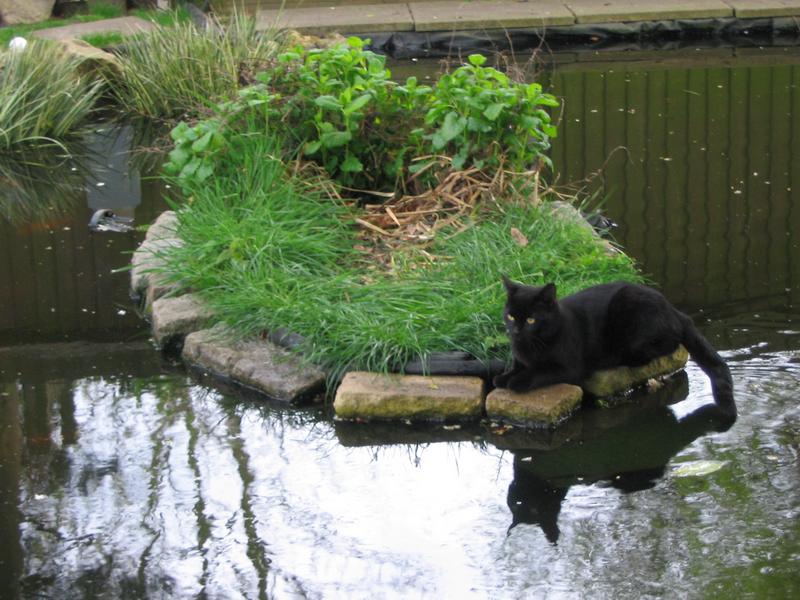
I've seen the fox jump onto the island, but this was the first time a cat had
done so. This is Elvis, a stray that comes for food daily.
the duck nest can
be seen, but no eggs this year.
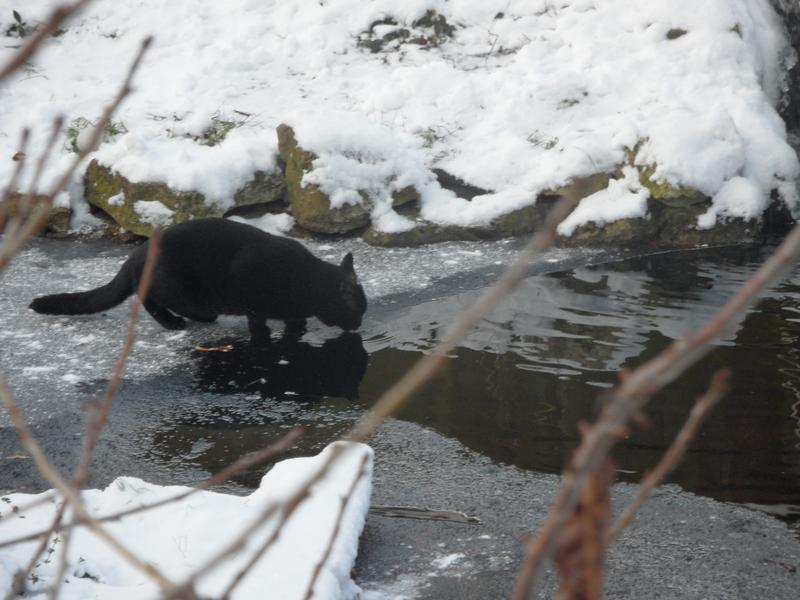
Elvis again a few months later, walking on ice, which gave way a few seconds
after this photo was taken, but he scrambled safely
to the rocks.
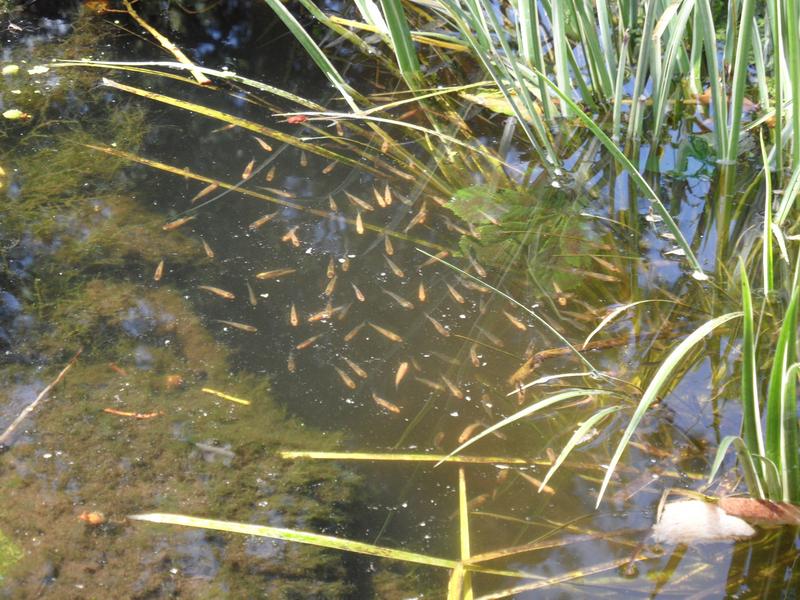
June 2011, a hundred odd small fish, probably comets, about one year old.

June 2011, some koi in the pond.
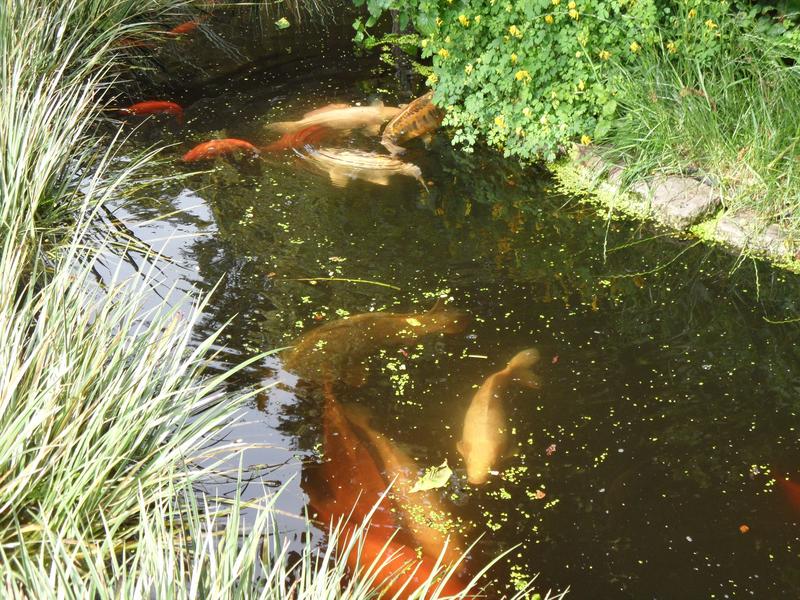
June 2011, the weather is not particularly warm yet, but the water must have
warmed sufficiently for the first fish mating of the season,
where they all
go mad, with male fish wildly chasing females around the pond, with lots of
splashing.

The koi mating, some are almost two feet long.
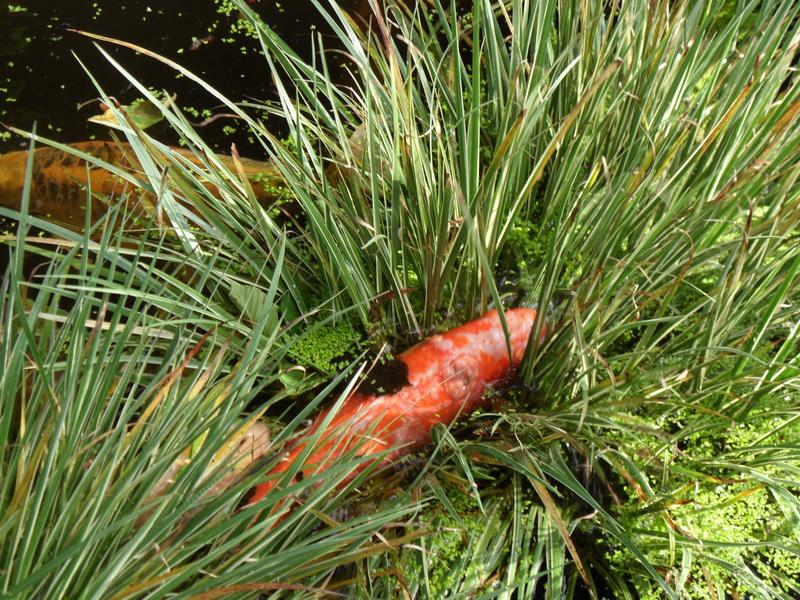
The female koi get driven into the plants, where they lay their eggs, which
are fertilised by male following. Unfortunately, all this
movement disturbs
the masses of duck weed (which ducks do not eat) which then floats off around
the pond, and is virtually
impossible to get rid of.

June 2011, some small carp or gold fish laying eggs on the plants.

Hard to see, but all the little white spots are fish eggs, laid on pond weed on the side on the pond. A lot will become fish food.
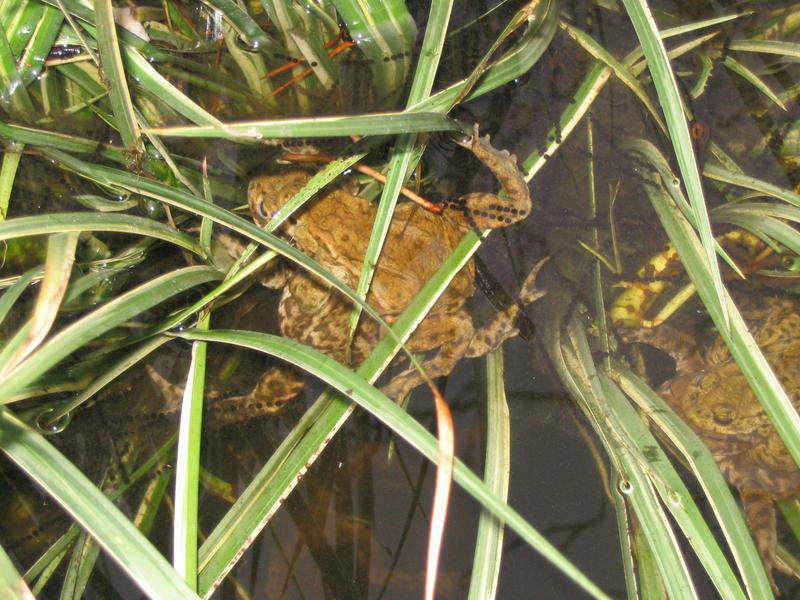
25th March 2011, frog and toad mating is well underway, two toad couples can
be seen here in day light, with long strings of toad
spawn crisscrossing the
plants from previous toads. Normally they only spawn at night, since the crow
can catch them during
the day, but there were at least 50 mating pairs and
200 more boys on the lawn and in the pond, so it gets congested at night.

Four more mating toad pairs, and a clump of frog spawn in the centre of the
plant. A few male frogs live in the pond year around, the
female frogs
only appear for mating, likewise the toads spend the rest of the year on land.

A male toad on top of a female, again in daylight so possible crow prey.

In June 2011, there are thousands of tadpole in the pond, a few of which are
seen here in the water having breakfast of floating bread the
ducks have not
eaten. They now have eyes on top of their bodies, and some have legs
forming either side of the tail. Once the legs
are grown, the tail
falls off, and they leave the pond, in two or three weeks. Green algae can
be seen on the rock an inch under water,
with tracks caused by the
tadpoles eating it. No idea if these are toad or frog tadpoles.
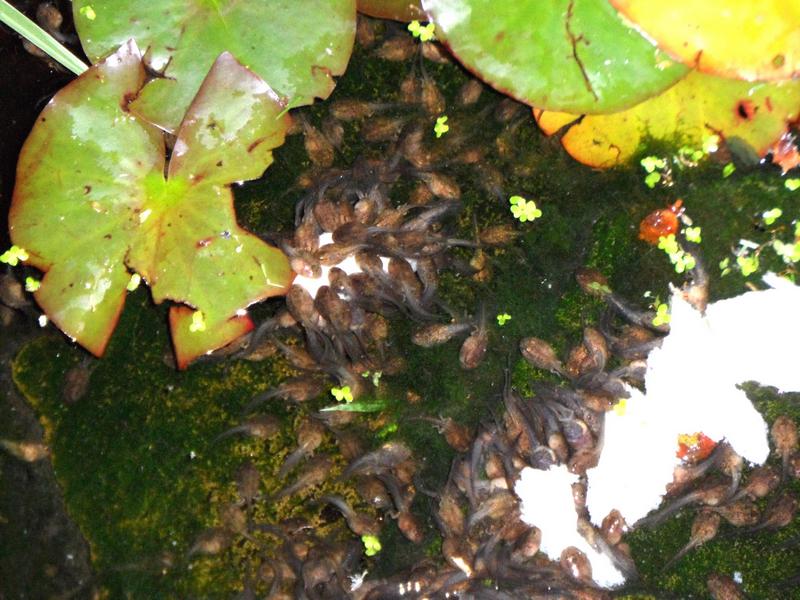
A flash photo taken at night, when thousands of tadpoles appear, safe from
most predators, to eat more bread. There growing legs
can be clearly seen,
they will start to leave the water in a week or so.

June 2011, a fledgling Starling eating a cherry. From eating two loaves
of bread a day, they are now down to half a load, with lots of
natural food
on the trees and bushes.
All photos and text on this web site is © Copyright 2026-2022
www.croydonducks.co.uk and may not be reproduced, copied or linked
without prior written permission. All rights reserved.